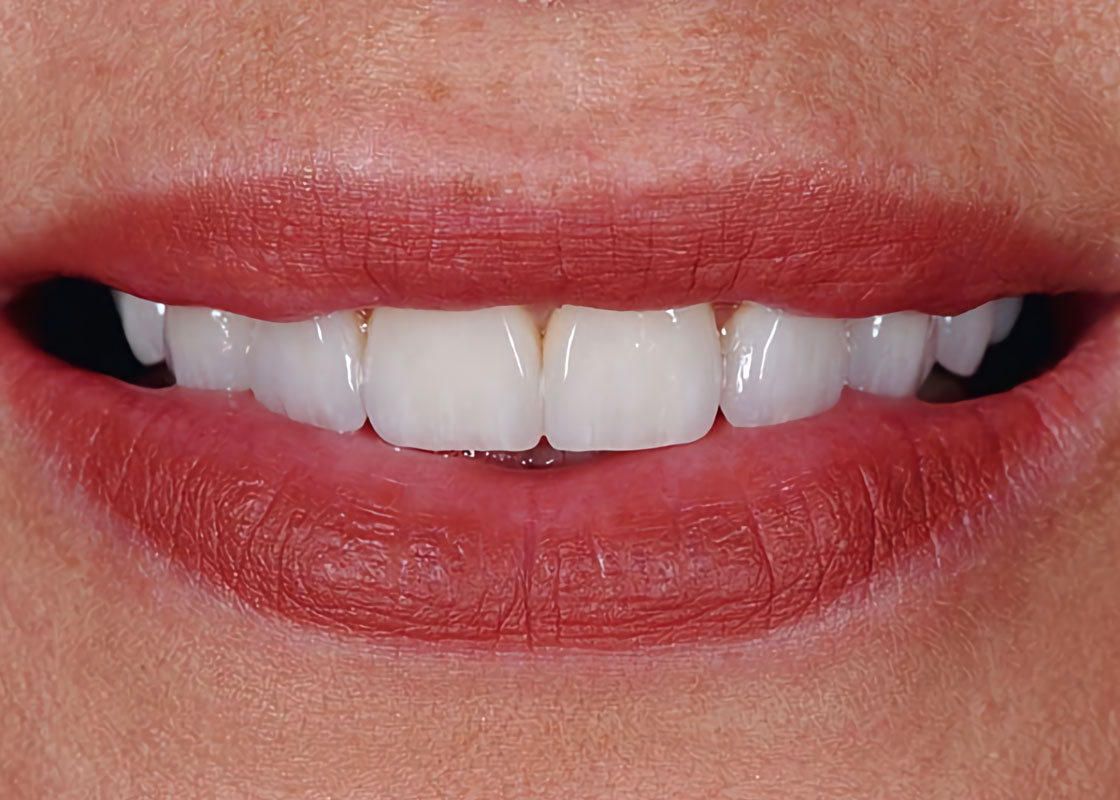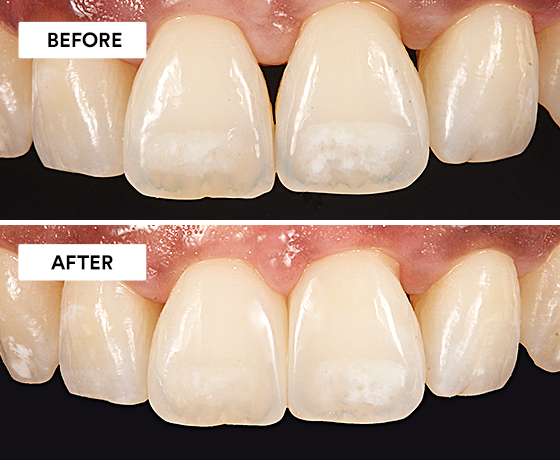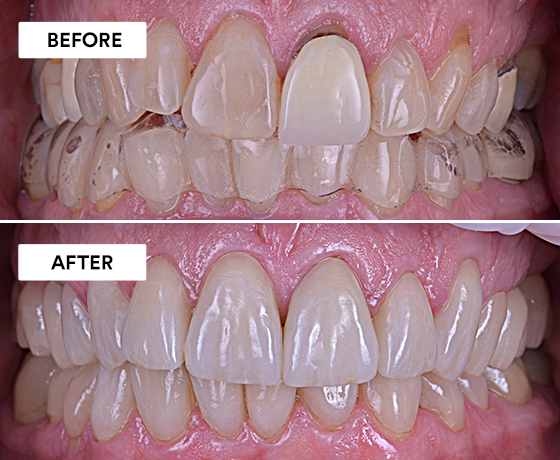Clinical Case: Black Triangle Closure Using Bioclear© BT Matrices
Using 3M™ Single Bond Universal Adhesive, 3M™ Filtek™ Supreme Flowable Restorative, 3M™ Filtek™ Universal Restorative, 3M™ Elipar™ Deep Cure-S LED…


When a patient presents in the dental office with the desire or need for restorative treatment in the anterior region, we usually have to choose between direct composite and indirect ceramic restorations. The general advantages and disadvantages of both materials and production procedures are very well known: direct restorative treatment with composite is less time-consuming and costly, and usually more conservative. Ceramic restorations are considered to offer a higher stability and lead to the best possible results in terms of long-term esthetics. In addition, they may have a more positive effect on periodontal health.
For a case-specific decision, the esthetic expectations, the financial investment the patient is willing to make and the time available for the treatment should be take into consideration. Additional factors are the number of teeth involved and the age of the patient. Each of the procedures is illustrated using one typical case.

Case 1: Two-layer technique with composite
Fractured central incisor one day after trauma. The margin is irregular with different levels of opacity due to enamel prisms broken at different depths and angles.

Moderate time and money available and high esthetic demands make this case ideally suited for a two-layer technique with composite.
To ensure an invisible margin, a long bevel is created at least 2 mm beyond the fracture line using a 40 µm diamond bur.

Once the bevel is created in a wave-shaped line, the margins are smoothened with a ceramic polishing rubber.

Finishing f the bevel with 3M™ Sof-Lex™ Extra-Thin Contouring and Polishing Discs.

Result of the procedure at the try-in of the silicone index used to create the palatal wall. The tooth is now ready for selective enamel etching, bonding and composite layering.

Situation after build-up of the palatal shell and proximal wall with 3M™ Filtek™ Supreme XTE Universal Restorative in the shade A2E and application of the dentin core. The space left for the final enamel layer should be 0.5 mm.

Tooth surface following the use of a fine flame bur (Perio Set). The pronounced macro and micro-structure is essential for a natural appearance with light reflection, refraction and scattering similar to that of the adjacent tooth.

Treatment result after polishing with a rubber polisher, discs and a jiffy goat hair brush used with polishing paste. Thanks to the wavy bevel and the surface texture, the restoration margin is virtually invisible.

Case 2: Ceramic veneers
This 36-year-old female patient presented for esthetic reasons. She wanted the spaces closed without needing to go through orthodontic treatment, and desired a fuller smile as well as a brighter color of her teeth. Due to extraordinarily high esthetic demands and no limitations in time and cost, we opted for ceramic veneers from first premolar to first premolar.

Composite mock-up (3M™ Filtek™ Supreme XTE Universal Restorative A2B) produced for esthetic evaluation and checking of phonetics and function.

Preparation through a second direct mock-up created exactly according to the wax-up. During the production phase, tooth bleaching was carried out at home for ten days.

Preparation through the mock-up using instruments with depth-orientation grooves enables the clinician to preserve healthy tooth structure and to bond in enamel.

Retraction of the gingiva using the double-cord technique for final impression taking. The photograph also displays the smooth surface structure created with 3M™ Sof-Lex™ Contouring and Polishing Discs for optimal bonding results.

Feldspathic ceramic veneers in place. In order to obtain good esthetic results and restoration longevity, it is decisive to ensure a dry working field and to use an esthetic, translucent, high-performance resin cement system (3M™ RelyX™ Veneer Cement in this case) according to the manufacturer’s instructions.

Treatment result.

Harmonious smile meeting the patient’s expectations. The diastemas are closed, the embrasure forms optimized and teeth brighter as desired.
Conclusion
Chosen correctly, direct and indirect restorative techniques can be used to produce highly esthetic outcomes in the anterior region. In order to ensure consistent and predictable results, it is recommended to standardize the decision-making process and to establish standardized clinical protocols, which bring more routine into the procedures. The criteria and procedures described in this article are examples of how this mission may be accomplished.

Using 3M™ Single Bond Universal Adhesive, 3M™ Filtek™ Supreme Flowable Restorative, 3M™ Filtek™ Universal Restorative, 3M™ Elipar™ Deep Cure-S LED…

Using 3M™ Scotchbond™ Universal Adhesive, 3M™ Filtek™ One Bulk Fill Restorative, and the 3M™ Sof-Lex™ Spiral Finishing and Polishing system.

Using 3M™ Protemp™ 4 Temporization Material, 3M™ Scotchbond™ Universal Plus Adhesive, and 3M™ RelyX™ Universal Resin Cement.